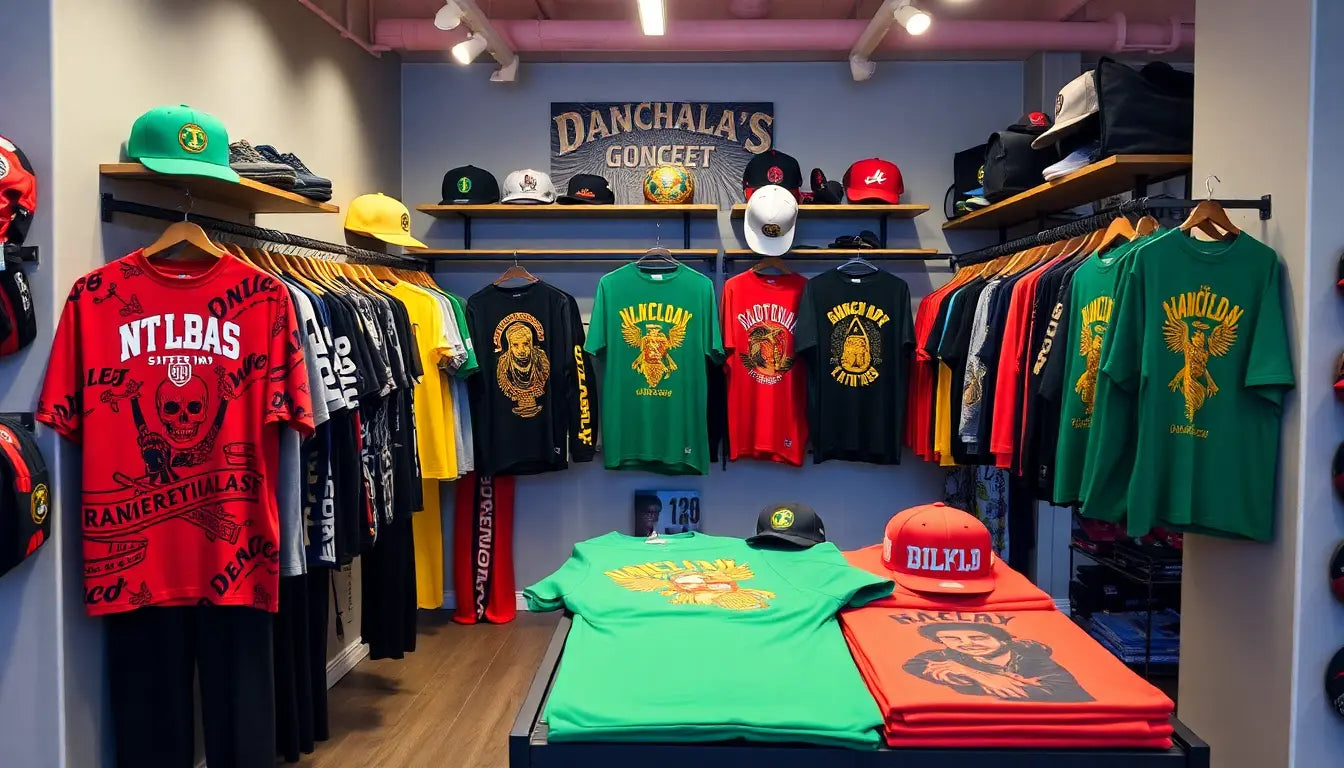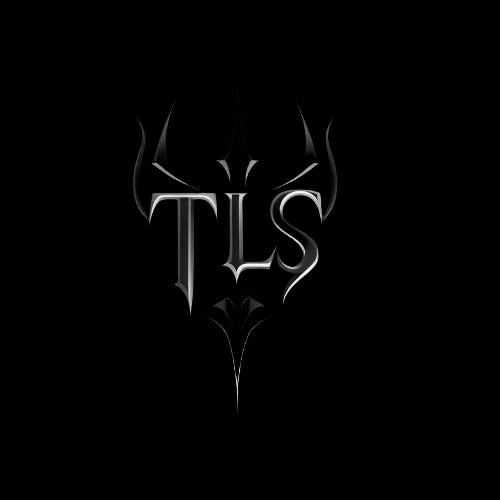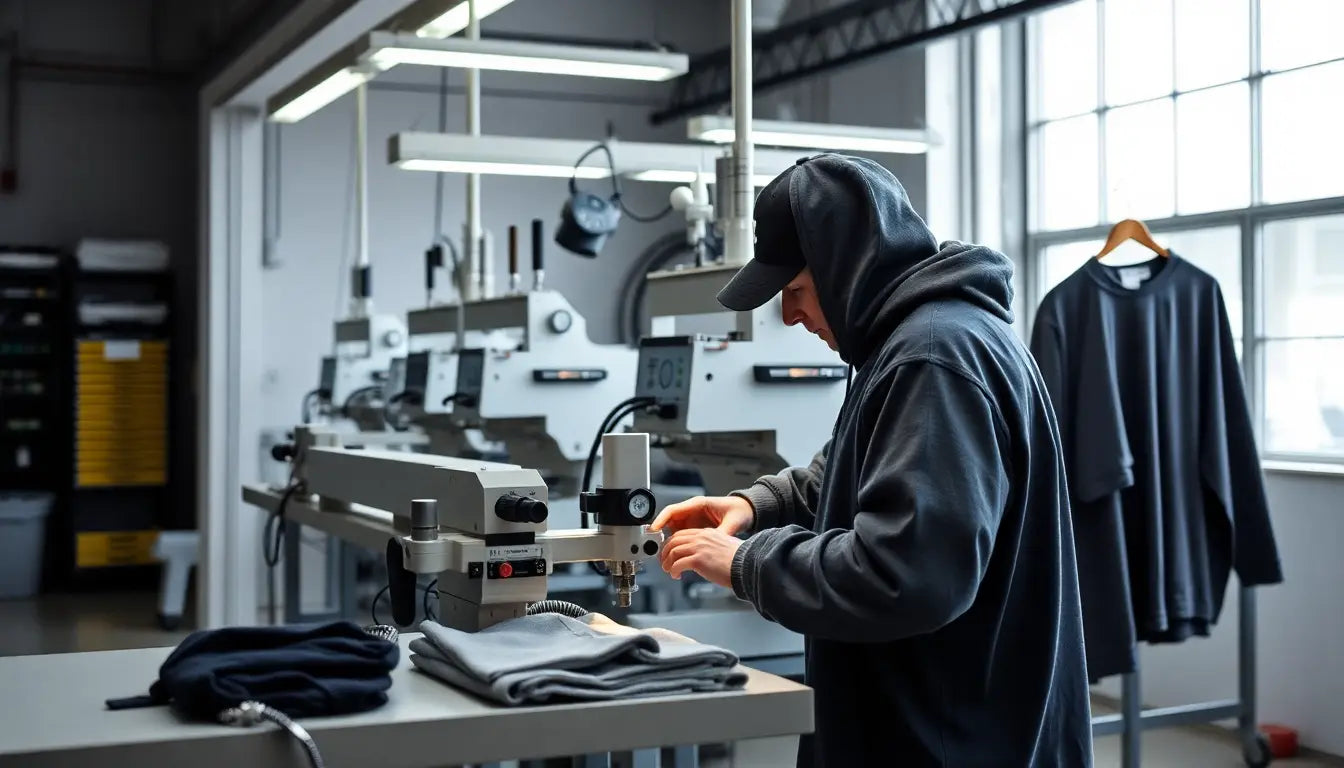
Turnkey Merch Franchises: How Tommy Lee Sparta Empowered Local Boutiques to Scale Dancehall Streetwear Globally
Introduction
In 2025, the fusion of music, fashion, and entrepreneurship is reshaping how culture-driven brands scale. Turnkey merch franchises — fully packaged retail partnerships that let local boutiques sell artist-driven apparel with minimal friction — have emerged as a proven model for turning fan enthusiasm into repeatable revenue. This article examines how the Tommy Lee Sparta brand used a turnkey approach to help local boutiques scale dancehall streetwear internationally, and provides a comprehensive, actionable playbook for boutique owners, artists, managers, and brand partners who want to replicate the model.
Why This Case Matters
Dancehall streetwear is more than clothing; it is cultural signaling, identity, and community. For artists like Tommy Lee Sparta, monetizing that aesthetic while preserving authenticity requires systems that respect local contexts and maintain global brand consistency. The turnkey franchise model resolves many of the traditional barriers — inventory risk, marketing know-how, supply chain complexity, and legal protection — allowing small retailers to participate in a larger brand economy.
Who Is Tommy Lee Sparta (Brief Context)
Tommy Lee Sparta is a Jamaican dancehall artist whose music and aesthetic have had substantial cultural influence in dancehall and associated streetwear scenes. His visual identity, lyrical themes, and community engagement create strong avenues for apparel and lifestyle products. Whether you are already familiar with his work or new to the genre, the lessons from his merchandising strategy are widely applicable to other artist-led fashion initiatives.
Understanding Turnkey Merch Franchises
A turnkey merch franchise provides a pre-built, brand-approved system that enables a boutique or small retailer to launch and operate a merchandise line without building infrastructure from scratch. Key components typically include:
- Pre-approved apparel designs and seasonal collections
- Standardized branding, packaging, and visual merchandising templates
- Supply chain and fulfillment integration (manufacturing, warehousing, dropship)
- Marketing assets: photography, video, copy, and digital ad templates
- Retail operations playbook: POS integration, staffing, store layout
- Legal agreements and IP protection measures
- Training and ongoing support from the franchisor
For artist-driven lines, the model balances centralized creative control with localized retail execution, enabling consistent brand storytelling across markets while allowing boutiques to adapt merchandising to their audience.
How Tommy Lee Sparta's Turnkey Model Worked
The model used several interlocking strategies to enable local boutiques to scale globally:
- Centralized creative control over core collections and limited-edition drops to protect brand identity.
- Localized assortments that allowed boutiques to choose regionally relevant SKUs (sizes, colorways, price points).
- Shared inventory pools and drop-shipping to reduce upfront inventory commitments for boutique partners.
- Coordinated marketing calendar tied to music releases, tours, and cultural events to maximize organic momentum.
- Standard training and visual merchandising guides to deliver consistent in-store experiences.
The result was a network effect: artist events generated spikes in demand that were efficiently converted into sales across boutique partners who were ready to sell the right SKUs at the right time.
Deep Dive: Product Strategy and Design
Successful artist merch balances authenticity, wearability, and production feasibility. Key product strategy elements included:
- Signature pieces: staple items (tees, hoodies, caps) that carry the clearest brand signals and the best margins.
- Seasonal drops: limited runs tied to releases or tours to create scarcity and urgency.
- Collaborative capsules: micro-collabs with local designers for market-specific appeal.
- Tiered SKUs: entry-level items priced for mass conversion and premium items for superfans (signed, numbered, VIP bundles).
Design guidance prioritized legibility of brand marks, thoughtful sizing charts for international markets, and adaptable graphics that work across multiple product categories.
Supply Chain, Manufacturing & Sustainability
Turnkey franchises must solve manufacturing scalability and ethical sourcing. Recommended approaches:
- Consolidated production runs to lower unit costs while reserving limited editions for smaller, higher-margin runs.
- Use of regional manufacturers and distributed warehousing to reduce shipping times and tariffs.
- Transparency in sourcing: provide boutiques and consumers with clear information on materials and factory standards to build trust.
- Sustainable options: organic cotton, recycled blends, and eco-friendly packaging to appeal to conscious consumers.
- Quality control checkpoints: pre-shipment inspections and sample approvals before full production.
Fulfillment Models for Boutiques
Choose a fulfillment mix that suits your capital and operational needs:
- Dropship: boutiques list full product catalogs and fulfill orders via the brand's centralized warehouse — low upfront cost, slower margins.
- Consignment: boutiques carry product without paying upfront until items sell — good for testing but requires clear reconciliation systems.
- Wholesale stocking: boutiques purchase inventory at wholesale prices and take full margin — higher risk, higher control.
- Hybrid: a mix of stocked bestsellers and dropship for niche SKUs.
Franchise Structure & Legal Framework
Protecting the artist brand and aligning incentives is essential. Typical legal and contractual elements include:
- License agreement outlining permitted uses of the artist's name, logos, and imagery.
- Franchise or partnership agreement specifying territory rights, duration, and renewal terms.
- Brand standards manual with mandatory visual and quality requirements.
- IP protections: trademark registrations, monitoring services, and enforcement strategies.
- Revenue sharing and royalty structures with clear reporting and audit rights.
- Termination clauses and transferability terms to protect both parties.
Financial Model: Margins, Fees & Revenue Splits
A robust financial model helps both artists and boutiques see the upside. Example components to model (use your own numbers):
- Wholesale price = Cost of goods sold (COGS) + Manufacturing markup
- Suggested retail price (SRP) = Wholesale price * retail markup (often 2.2–2.5x)
- Franchise/onboarding fee = one-time setup and training charge
- Royalty = percentage of gross sales (typical range 5–15% depending on services provided)
- Marketing fund contribution = co-op ad spend percentage for brand-level campaigns
- Profitability timeline = months to breakeven given inventory and marketing spend
Sample scenario (illustrative): Boutique stocks $10,000 wholesale of product, SRP yields $22,000 retail sales, gross margin on retail ~55%, franchise royalties 8% of sales, marketing co-op 2% — use these inputs to run sensitivity analysis for different sales velocities.
KPIs and Dashboards to Track
Measure both brand and retail health with a mix of marketing, operational, and financial KPIs:
- Sales per square foot / sales per SKU
- Conversion rate (in-store and online)
- Average order value (AOV) and customer lifetime value (CLTV)
- Sell-through rate by SKU and by drop
- Inventory turnover and days of inventory on hand
- Return rate and reasons for returns
- Customer acquisition cost (CAC) and return on ad spend (ROAS)
- Local search visibility and organic traffic growth for boutique landing pages
Comprehensive Digital Marketing & SEO Playbook
To rank highly and convert traffic, the franchise prioritized discoverability at both brand and local levels. Key tactics:
Keyword Strategy and Target Phrases
- Primary (high intent): Tommy Lee Sparta merch, dancehall streetwear, official Tommy Lee Sparta apparel
- Secondary (informational & long-tail): how to style dancehall streetwear, where to buy dancehall clothing, Tommy Lee Sparta hoodie drop 2025
- Local SEO phrases: Tommy Lee Sparta merch near me, dancehall clothing boutique [city], buy Tommy Lee Sparta shirts [country]
On-Page SEO Best Practices
- Unique product page titles with keywords and modifiers (e.g., "Official Tommy Lee Sparta Hoodie — Limited Drop 2025")
- Optimized meta descriptions that encourage clicks and include primary keywords
- High-quality images with descriptive alt text and fast-loading formats (WebP)
- Structured data (Product, Offer, Review schema) to enhance SERP features
- Canonical tags and hreflang for multi-region boutiques to avoid duplicate content issues
Technical SEO Checklist
- Mobile-first responsive design
- Page speed optimizations: image compression, lazy loading, minimized JS/CSS
- Secure site (HTTPS) and fast hosting/CDN for global performance
- XML sitemap and robots.txt properly configured
- Server-side redirects for deprecated SKUs and landing pages
Local SEO & Store Pages
- Dedicated landing pages per boutique with NAP (name, address, phone) consistency
- Local schema markup and Google Business Profile optimization
- Region-specific content: local events, storefront photos, staff bios
- Local backlink building: press, community blogs, event listings
Content Marketing & Editorial Calendar
Content positions the brand as cultural authority, captures long-tail traffic, and supports social promotion. Content pillars to execute:
- Culture & history: stories about dancehall, the artist's influences, and streetwear evolution
- How-to guides: styling dancehall streetwear, sizing guides, care for limited edition pieces
- Behind-the-scenes: design process, manufacturing tours, interviews with designers
- Drop announcements and recap posts with UGC and event photos
- Local content series: "Boutique Spotlight" to boost local SEO and build community
Social & Community Strategy
Social platforms fuel awareness, community, and commerce. Use platform-specific tactics:
- TikTok and Reels: short styling clips, drop teasers, tour merch reveals, and dance challenges tied to music.
- Instagram Shop & Live: tag products in posts and host live drops with Q&A.
- YouTube: longer-form content such as documentary-style brand films and behind-the-scenes production.
- X and Threads: timely announcements, meme-driven content, and customer interactions.
- Discord / Telegram: VIP communities for superfans, presale access, and direct feedback loops.
Influencer & Creator Partnerships
Design a tiered influencer strategy to maximize reach and authenticity:
- Macro-influencers: high-visibility collaborators for global drops and awareness campaigns.
- Micro-influencers: neighborhood tastemakers driving boutique foot traffic.
- Local creators: dancers, DJs, and community figures who tie the brand to cultural contexts.
- Artist collaborations: guest designs and co-branded content for cross-promotion.
Email, SMS & CRM
Owned channels are crucial for conversion and retention. Tactics include:
- Segmentation: fans, local customers, VIPs, wholesale buyers.
- Drop-exclusive presale emails and SMS alerts for registered fans.
- Post-purchase flows: order confirmations, care instructions, cross-sell recommendations.
- Re-engagement campaigns tied to music releases or localized events.
Experiential Marketing & Retail Events
In-person experiences turn cultural capital into lasting customer relationships. Ideas:
- Listening parties and pop-up shops timed with releases or tour dates.
- In-store dance or fashion showcases with local talents.
- VIP meet-and-greets and signed merch bundles for superfans.
- Collaborative activations with other local brands (cafés, galleries) to expand reach.
Case Study Summaries & Measured Outcomes
While specifics vary by market, boutiques participating in the turnkey program commonly reported:
- Higher foot traffic during coordinated drops and artist activity windows.
- Improved AOV through bundled VIP packages and exclusive items.
- Faster sell-through on limited editions versus standard wholesale lines.
- Increased local press coverage and social engagement tied to authentic cultural storytelling.
These outcomes demonstrate how a coordinated artist-franchise system can transform sporadic merch demand into predictable retail performance.
Pitfalls, Risks & How to Mitigate Them
Common challenges and recommended mitigations:
- Oversupply: use pre-orders and limited runs to avoid overstock.
- Brand dilution: maintain strict brand standards and centralized approvals.
- Counterfeits: invest in IP monitoring and rapid takedown processes.
- Local market mismatch: enable curated local assortments and test small runs first.
- Cashflow strain for boutiques: offer dropship/consignment options and flexible payment terms.
Scaling Internationally: Logistics & Localization
Expanding globally requires attention to taxes, customs, and cultural nuance:
- Map tariff and import regulations in priority markets and set pricing that accounts for duties.
- Localize product copy, sizing, and marketing creatives to match cultural expectations.
- Use regional warehouses and dropship nodes to reduce shipping time and cost.
- Partner with local logistics providers for last-mile reliability.
Data-Driven Growth: Testing & Iteration
Use data to optimize the franchise network:
- Run A/B tests on landing pages, product copy, and pricing by region.
- Monitor sell-through rates and adjust future production runs accordingly.
- Collect post-purchase surveys to learn about fit and product preferences.
- Track attribution across channels to allocate marketing spend to highest-performing tactics.
Future Trends: Where Artist-Driven Retail Is Headed
- Phygital experiences: blending physical drops with NFTs and augmented reality try-ons.
- Direct-to-consumer personalization: on-demand printing and localized micro-runs.
- Stronger sustainability expectations: circular programs, resale partnerships, and certified materials.
- Decentralized communities: fan-governed drops and co-creation via digital platforms.
Actionable Checklist for Boutique Owners
- Evaluate local demand with a small pilot drop or pre-order campaign.
- Ensure your POS and e-commerce can integrate with brand-provided inventory systems.
- Negotiate a trial-term license with clear KPIs and minimal upfront inventory risk.
- Prepare a local marketing calendar aligned with artist activity (releases, tours).
- Train staff in product storytelling and sizing guidance for international customers.
- Set up local schema markup and a boutique landing page to capture nearby searches.
- Build a basic dashboard to monitor sell-through, AOV, and local traffic sources.
Checklist for Artists & Managers
- Protect core IP with trademark registrations in priority markets.
- Standardize brand assets and create an easy license package for partners.
- Invest in a centralized operations team or partner to manage production logistics.
- Create fan-first incentives (VIP access, presales) to reward engagement and drive conversion.
- Track performance data from boutique partners to inform future product strategy.
Conclusion
The turnkey merch franchise model demonstrated through the Tommy Lee Sparta approach shows how culture-first brands can scale without sacrificing authenticity. By combining centralized creative control, robust legal protection, flexible fulfillment options, and a data-driven digital strategy, local boutiques can convert fan enthusiasm into consistent revenue and global reach.
Next Steps
If you're a boutique owner, artist, or brand manager interested in implementing a turnkey merch franchise, start small: design a pilot drop, define success metrics, and secure legal terms that protect both parties. Use the playbook and checklists in this article to create a scalable, local-first strategy that preserves cultural authenticity while unlocking global potential.
Resources & Templates
Consider building or requesting these templates from partners before launching:
- Brand standards manual and visual merchandising templates
- Sample licensing agreement and royalty reporting template
- Inventory forecasting spreadsheet and reorder alerts
- Local landing page template with schema markup and analytics tracking
- Marketing calendar aligned with artist activity and seasonal drops
Final Thought
Turnkey merch franchises are not just a distribution tactic — they are a framework for cultural entrepreneurship. When executed with respect for the music, community, and commerce that together shape a movement, they enable artists and small businesses to build sustainable businesses while amplifying the culture they represent.


